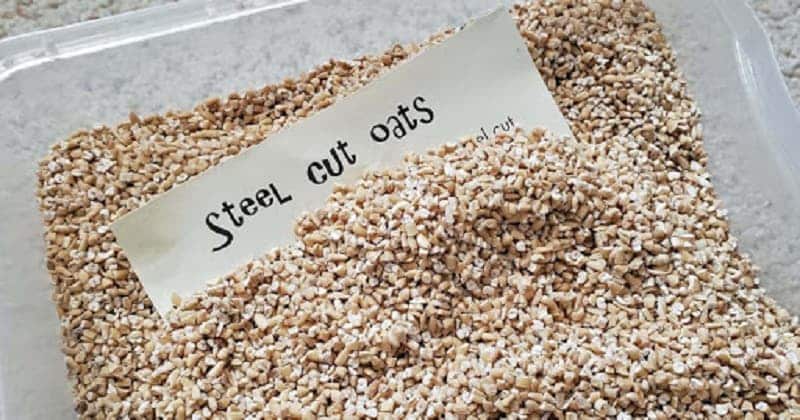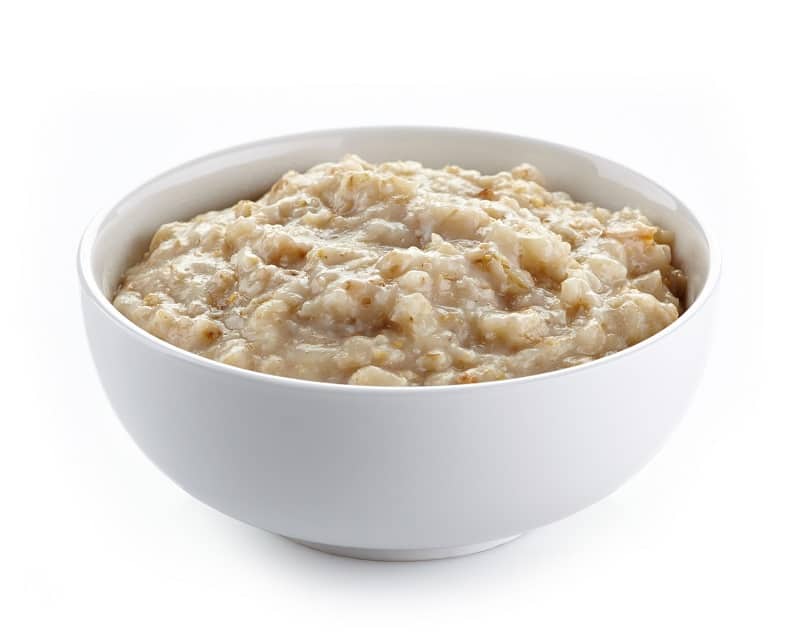How to Make Oatmeal Last?
Oatmeal is one of the most nutritious and durable whole grains on the market. Filled with fiber and important vitamins and minerals, oatmeal is the mainstay in household pantries across the world. If you’re trying to use it as a hot breakfast cereal, a foundation for savory and soothing porridge, or want to add texture and fiber to the baked goods, there’s no doubt that having the oatmeal on hand is a smart idea.
Oatmeal is a perfect kitchen favorite, whether you’re using it for a stick-to-your-ribs breakfast or adding it to the baking. If you’ve taken an old package out of the pantry that’s past its peak before the deadline, you may be thinking, does the oatmeal go sour, and how long does it last?
As a general rule of thumb, packaged oatmeal can last up to two years in the pantry when kept properly. Oatmeal can go bad, but if stored appropriately, it has a good shelf life and can be eaten long past the best before the date. While it is not likely to become rancid, if it is stored under the wrong conditions, oatmeal may grow mold or become infested with bugs.
Shelf life
Oatmeal has a fairly long lifespan compared with many other foods. However, it all depends on how it was processed, whether it has been cooked, what ingredients have been added to it, and the storing method. Similar to dried rice or pasta, commercially processed and uncooked rolled, quick, or steel-cut oats will typically last at least 12 months — and up to 2 years if the package remains unopened or the oats are stored in an air-tight container.
Commercially processed oats usually undergo a steaming process, which contributes to their long shelf life. Unstabilized oats that have not been steamed during processing, have a reduced shelf life of about 3–4 months. If the oatmeal has dry milk or fruit it can last anywhere from 4 months to 1 year, depending also on its storage. Cooked oatmeal should not be kept longer than about 3–4 days. If you do freeze it, then it will remain bug and moisture free for 3 months.
Oatmeal is sold with a best before the date that serves as a rough indicator but isn’t a concrete use by date. For some brands, the items beyond a date are safe to eat but they do undergo flavor and color changes and lose some nutritional value. In the case of instant Oatmeal when stored correctly, can last you one to two years in the pantry.
Flavored or Cream Oatmeal has a shorter shelf life of around six to nine months. While instant Oatmeal can last anywhere from two to three years stored in the pantry.
How to identify whether oatmeal has gone bad
Unlikely to go rancid it can become moldy if not stored correctly. If you notice the changes mentioned below you will know that oatmeal has gone bad. If the color is darker or lighter and the texture is powdery, it is not fit for consumption. Which signifies fuzz or mold.
An odd smell or taste which is generally sour also indicates the end of shelf life. When left alone for a long time you may find it infested with insects. To find out effectively sprinkle some into a little into a bowl filled with water and see if any bugs float to the top.
How to ensure that oatmeal lasts
The two main risks to oatmeal, in the long run, are exposure to air – which induces oxidation – and moisture. Space is also one of the most important things to keep in mind. Ideally, you can store oatmeal in a quiet, cold place like a pantry.
If the box is opened, reduce the exposure to air and moisture by moving the oatmeal to a resealable plastic bag or airtight container. This avoids glitches, too.
- Steel Cut Oats

Products such as steel-cut oats are a whole-grain crop that requires more oil than rolled oat varieties and are thus vulnerable to rancidity quicker than other products. They can be placed in a closely packed jar in the refrigerator or freezer to prolong their shelf life.
- Cooked Oatmeal

Cooked oatmeal and overnight oats must be cooled to prevent spoilage. Soaked and cooked grains can quickly mold or become the host of unwanted bacteria that can induce a foodborne illness. When preserving cooked oatmeal, pick a jar with a strong seal and hold it refrigerated until you’re ready to feed. When you ice it, make sure you place it in an air-tight jar to keep the freezer from burning. The temperature threat zone varies from 40°F to 140°F.
Keep cold food cold, hot food hot, and preserve the leftovers properly. You can refer to these three methods to store leftover cooked oatmeal namely refrigerating, freezing, or dehydrating.
- Bulk Oats

Safely store bulk or dry oatmeal in a cold, tidy, dark, and dry storage area. Store-purchased packaging should be appropriate, but opened containers should be sealed in an airtight shipping container. Bulk oats have different lengths of life depending on the storage systems you chose. If you store bulk oats efficiently, you can stretch the shelf life to 30 years. Proper handling of bulk oats starts by removing contact with air by the use of oxygen absorbers and also by making an airtight seal to remove any unnecessary radiation. There are a few suggested storage vessels to do this.
One thing you should do is keep the storage area tidy to avoid unwelcome tourists, such as insects and rodents. Temperature management is essential to the conservation of nutrients in the oats. Darkness, on the other hand, retains the nutrients of oat. Moisture is consumed by dried oats and gradually creates mold.
Store in a cold, dry spot, such as a pantry or cupboard. After opening the initial packaging, move it to a water-and air-tight pan, such as glass, stainless steel, or ceramic cup, to help keep it fresh.
Here are some safety tips to follow when it comes to dry oatmeal:
-
- Uncooked dry oatmeal should be kept in a cool, safe, and dry spot.
- Opened oatmeal should be packed securely in a resealable plastic bag or a plastic or glass bottle. It is best to practice to use open oatmeal within one year.
- Dry oatmeal can also be kept in a plastic bag for one year in the freezer. Your freezer should be 0 degrees Fahrenheit.
- The “best by” or “best if used by” dates are really useful ideas. At this date, the oatmeal will still be secure if preserved properly. Oatmeal can produce an off smell or taste depending on where and how it was processed. So always look at, and smell, the dried oatmeal you’re going to use.
- Dry storage: a well-ventilated dry storage area is an ideal location for dry oats.
- Refrigerator: The refrigerator is cold, dark, and dry, which essentially works well for dried oats.
- Freezer: Freezing oats is one way to prolong the shelf life further. However, the freezer room and the expense of operating the refrigerator can become troublesome over time.
If you want to keep your bulk oats at room temperature, well-packed bulk oats can hold the highest quality for around 18 to 24 months. To increase the shelf life of bulk oats after the box is opened, move to a sealed airtight container or put the original package in a resealable plastic freezer bag and install an oxygen absorber. You should cook the oats straight from the fridge.
Old oats can however be used for several applications such as body scrubs, facemasks, bath bombs, and also hair masks. It can also be used to treat acne.
See Related Topic: How to Thicken Homemade Tomato Sauce
Conclusion
A nutritious staple in households all over the world, the humble oatmeal can last longer than other grains. Oatmeal can last long but this depends on how you have stored it. As depicted above oatmeals nowadays also come with various combinations such as berries, nuts, milk, spices, etc. Depending on the additional ingredients oatmeal’s shelf life can also vary. So whenever you buy a packet of oatmeal or many packets in bulk ensure that you have enough storage area that is clean, dry, and dark so that your oatmeal can last longer even once the package is opened.
Commercially processed oatmeal can last up to 1–2 years when kept dry. However, the actual shelf life can vary based on how it has been made, how you store it, whether it has been baked, and whether any perishable additives have been added to it. If you detect any mold or shifts in the color or smell of the oatmeal, it’s better to throw it out.
You will increase the shelf life of any kind of oatmeal by holding it away from excess moisture and oxygen exposure. Previously cooked oatmeal can still be kept in the refrigerator or freezer until you can eat it. You can also dehydrate it by sealing it in airtight containers for a long-lasting and healthier experience.






